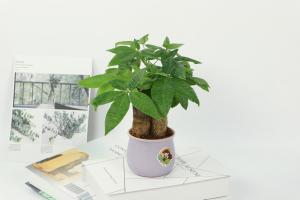Why Do You Need to Tie Tomato Plants to Cages?
Tomatoes are one of the most popular vegetables to grow in a home garden. They are easy to cultivate and provide a bountiful harvest. However, as tomato plants grow, they can become heavy and unwieldy, causing them to flop over and even break. This is where tomato cages and tying come in. In this article, we will discuss why you need to tie tomato plants to cages and how to do it effectively.
What Are Tomato Cages?
A tomato cage is a wire structure that is placed around a tomato plant to support its growth. They come in various shapes and sizes, but most are made of thin wire meshing. They are designed to keep the tomato plant upright and prevent it from growing in a haphazard manner. Cages are an excellent way to keep the tomato plant organized and help it grow vertically, saving space in the garden.
Why Do You Need to Tie Tomato Plants to Cages?
While tomato cages keep the plant from sprawling on the ground, they do not always keep the plant fully supported. When tomato plants start to grow, they can become top-heavy, making them susceptible to bending and breaking. Tying the tomato plant to the cage gives it additional support, preventing it from snapping under its own weight. Tying also ensures that the plant grows straight, which leads to better air circulation, fewer diseases, and a better yield of fruit.
What to Use for Tying Tomato Plants to Cages?
There are several materials you can use to tie your tomato plants to their cages. The most common are twine, string or nylon stockings. The material you choose will depend on your preference and the size of your plant. Some people prefer to use natural materials such as jute or twine, while others use synthetic materials like nylon stockings or string. Whichever you choose, be sure that the material is strong and durable enough to handle the growth of the tomato plant.
How to Tie Tomato Plants to Cages Effectively?
When tying a tomato plant to its cage, it's essential to ensure that the ties are tight enough to provide support, but not too tight that they cut into the plant. Tomato branches are fragile, and too much pressure can damage them. Begin by selecting a mature stem or branch with at least one ripe tomato. Position the tie around the stem and the cage securely. Be careful not to tie too tightly or too close to the plant. Repeat this process for all the branches that need support. Check the stems regularly and adjust the ties as needed as the plant grows.
Conclusion
Tying tomato plants to cages is an essential step in ensuring a bumper harvest of healthy and delicious fruit. Tomato cages are an excellent way to keep the plant organized and upright, but tying it to the cage gives the plant additional support, ensuring it grows vertically and healthy. Choosing the right material and tying technique are both essential if you want to achieve the best results. By following these tips, you can ensure a productive season of healthy and vibrant tomato plants.

 how many times do yo...
how many times do yo... how many planted tre...
how many planted tre... how many pine trees ...
how many pine trees ... how many pecan trees...
how many pecan trees... how many plants comp...
how many plants comp... how many plants can ...
how many plants can ... how many plants and ...
how many plants and ... how many pepper plan...
how many pepper plan...































